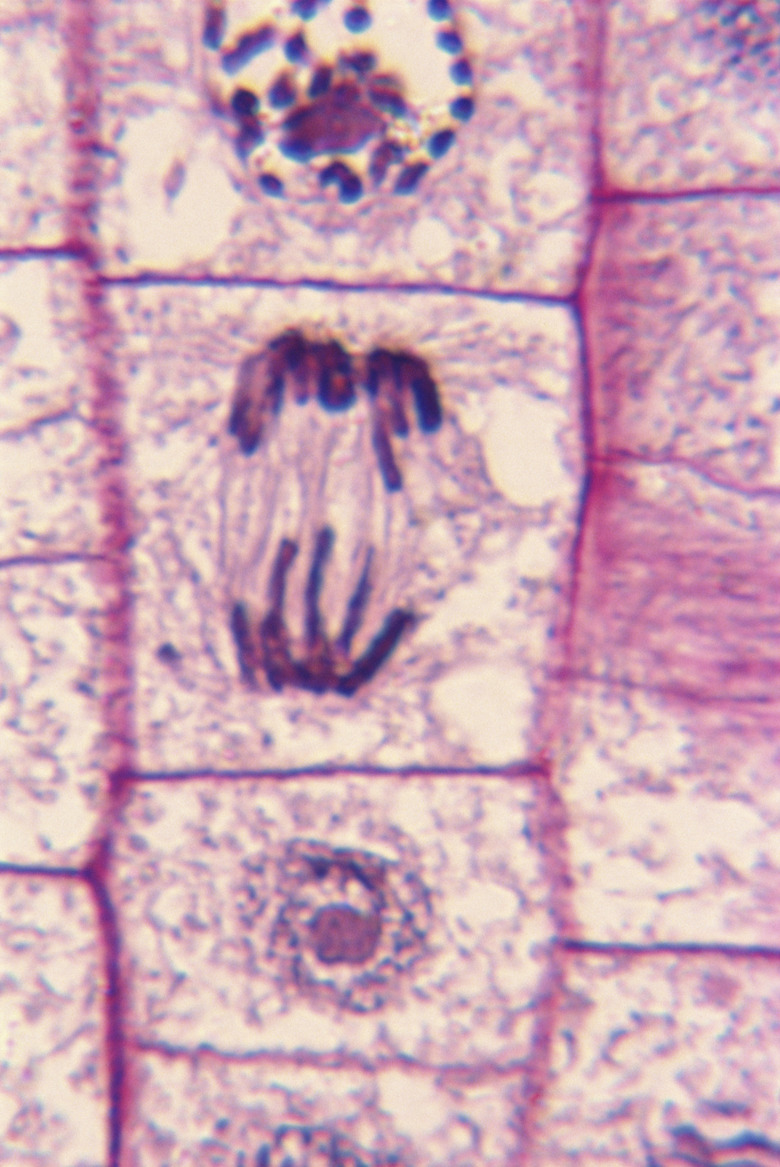What Are The Steps In Meiosis That Increase Variability?
Prokaryotic organisms such as bacteria may be tiny (they consist of a single cell), but they have this much going for them: Genetic diversity is not a concern, and the job of every cell is to divide into two cells just like it. This is called **binary fission**.
In eukaryotes, cells are more complex and they contain a great deal more DNA (the genetic matter of life) than their prokaryotic counterparts. This DNA is divided into chromosomes; humans have 46 in most cells. Chromosomes in turn sit inside a membrane-bound nucleus. Most cells divide by mitosis, which is similar to binary fission and has the same result: identical daughter cells.
Specialized cells in the organs known as gonads (ovaries in women, testes in men) divide differently. This process, called meiosis, shares plenty of overlap with mitosis. But without two critical processes in meiosis, called recombination (or crossing over) and independent assortment, meiosis would add no genetic diversity.
How Does Meiosis Increase Species Diversity?
How Does Meiosis Increase Species Diversity?
When you ask, "How does meiosis create genetic diversity in a species?" what you are really asking, at a more basic level is, "Which phases of meiosis are responsible for producing the genetic variation seen in gametes?"
For now, just know that these phases are two in number and are labeled prophase 1 and metaphase 2. This possibly cryptic terminology will become clear shortly.
Overview of Cell Division in Eukaryotes: Mitosis
Overview of Cell Division in Eukaryotes: Mitosis
It is best to learn mitosis before tackling meiosis. Mitosis is a process that includes four phases. Mitosis begins after the cells have duplicated all of their chromosomes to make (in humans) 46 identical twin sets, called sister chromatids.
Mitosis consists of prophase, metaphase, anaphase and telophase. In these steps, in order, the sister chromatids become more condensed, form a line, are pulled apart and "watch" as the nucleus divides around them and forms two daughter nuclei. Then, the cell as a whole divides (cytokinesis).
Steps of Meiosis
Steps of Meiosis
Meiosis is divided into two stages: meiosis 1 and **meiosis 2.** Each of these has the same four steps that are the same as those in mitosis with the number attached at the end to indicate which stage of meiosis is underway.
In prophase 1, instead of 46 pairs of sister chromatids lining up to divide, 23 groups of four chromosomes line up. This is because the corresponding chromosomes from the mother and the father "find" each other; combining the two sister-chromatid sets yields a tetrad, or bivalent. So immediately, mitosis and meiosis differ substantially.
In metaphase 1, the tetrads line up in a usefully random way, described below. In anaphase 1, the "mother" and "father" sets of joined chromosomes are separated, and in telophase 1 the cell divides. Each of the new daughter cells undergoes meiosis 2, which is a simple mitotic division. The result is four gametes with 23 chromosomes instead of the 46 other cells have.
Crossing Over
Crossing Over
**Crossing over** in meiosis, also called recombination, is the "swapping" of DNA that occurs after the homologous chromosomes (the father-given chromosome and the mother-given one of a particular number) "find" each other in prophase 1.
Thus when these chromosomes are then separated in anaphase 1, neither is the same as it started.
Independent Assortment
Independent Assortment
Independent assortment in meiosis is the random lining up of tetrads in metaphase 1 along the eventual line of nucleus division. "Random" in this sense means that there is an equal chance that the mother-derived chromatids in a tetrad will line up on either side of the division line.
This means that in a cell with 23 dividing parts, each of which can go in one of two ways, there are 223 or 8.4 million possible gametes.
This along with the variation contributed by recombination, it should be no surprise that no two people (other than twins) ever truly look exactly alike!
Cite This Article
MLA
Beck, Kevin. "What Are The Steps In Meiosis That Increase Variability?" sciencing.com, https://www.sciencing.com/steps-meiosis-increase-variability-11383626/. 10 June 2019.
APA
Beck, Kevin. (2019, June 10). What Are The Steps In Meiosis That Increase Variability?. sciencing.com. Retrieved from https://www.sciencing.com/steps-meiosis-increase-variability-11383626/
Chicago
Beck, Kevin. What Are The Steps In Meiosis That Increase Variability? last modified August 30, 2022. https://www.sciencing.com/steps-meiosis-increase-variability-11383626/
